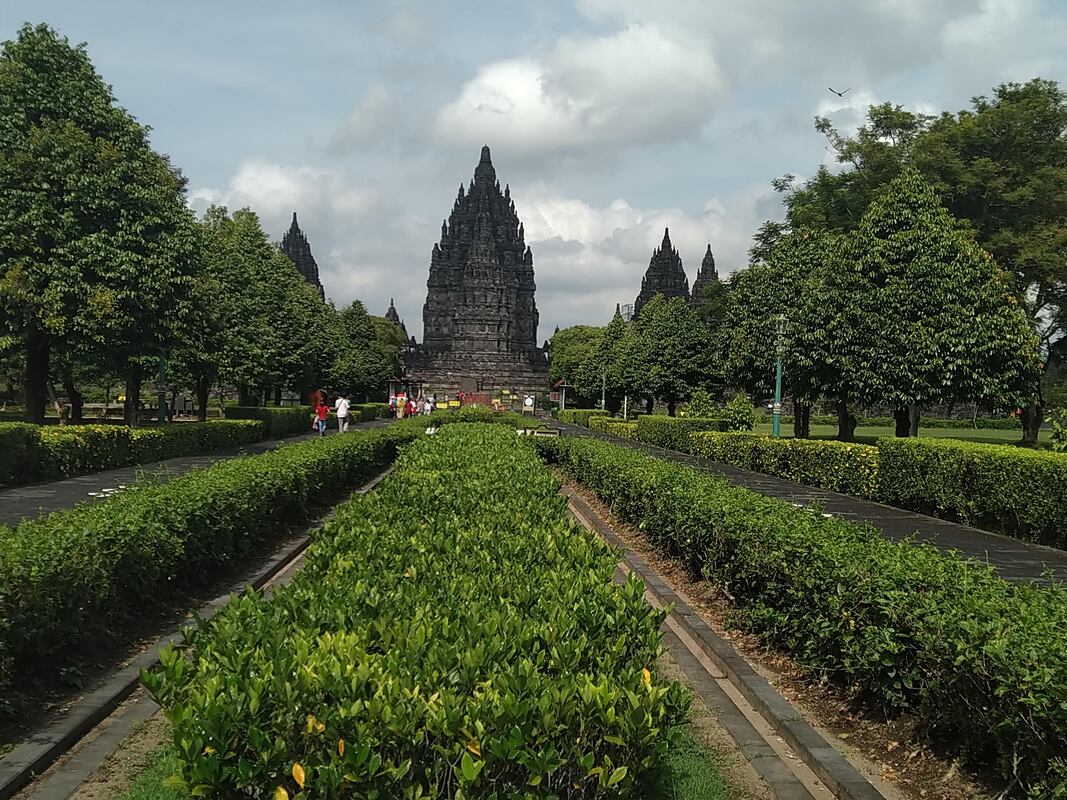Prambanan Temple, Sleman, Yogyakarta, Indonesia
We visited Prambanan Temples Complex which is located approximately 17 kilometers northeast of the city of Yogyakarta on November 10, 2020. Prambanan temples complex is known as is the largest Hindu temple site in Indonesia and the second-largest in Southeast Asia. This site was built around 8th century CE by Rakai PIkatan followed by King Lokapala, both from Sanjaya Dynasty. This site was dedicated to the Trimūrti, the expression of God as the Creator (Brahma), the Preserver (Vishnu) and the Destroyer (Shiva).
We explored this temple complex consisting of 6 largest temples. Those are Brahma Temple, Vishnu Temple, and the largest one called Shiva Temple. Across the trimurti temples are the Wahana (vehicle) temples. Each temple is named after the vehicle of the gods. Garuda temple is across Vishnu, Nandi (ox) temple is the vehicle for Shiva, and Angsa (swan) temple for Brahma.
In addition to these 6 temples, around Prambanan temples complex there lay other three quite large temples, namely Bubrah Temple, Sewu Temple and Lumbung Temple. The later was built by Rakai Panangkaran from Syailendra Dynasty. The difference between the latter three temples and the Prambanan one was on the religion purpose. Prambanan was more toward Hindu purpose, whilst the other three toward the Buddha one. This is actually the uniqueness of this temples complex; we can find at almost same place with the two types of temple of the two religions.
We are pleased to have an opportunity to visit Prambanan Temples Complex. Prambanan Temples Complex was well preserved and well maintain, the temples itself as well as its environment. They offer tranquility for the visitor to explore the temple freely yet responsibly. Prambanan Temples Complex was the landmark of Sanjaya as well as Syailendra Dynasties from around 8th century CE.
Nevertheless, there are still hundred of ruins of the temples that haven't been restore yet. This is actually the homework for our generation to afford restoring and rebuilding the remaining temples in the near future in order to complete this temple complex. We believe if this restoration is complete, the look of Prambanan Temples Complex would be more grandiose and astonishing. This is one of the heritages of the world.
We explored this temple complex consisting of 6 largest temples. Those are Brahma Temple, Vishnu Temple, and the largest one called Shiva Temple. Across the trimurti temples are the Wahana (vehicle) temples. Each temple is named after the vehicle of the gods. Garuda temple is across Vishnu, Nandi (ox) temple is the vehicle for Shiva, and Angsa (swan) temple for Brahma.
In addition to these 6 temples, around Prambanan temples complex there lay other three quite large temples, namely Bubrah Temple, Sewu Temple and Lumbung Temple. The later was built by Rakai Panangkaran from Syailendra Dynasty. The difference between the latter three temples and the Prambanan one was on the religion purpose. Prambanan was more toward Hindu purpose, whilst the other three toward the Buddha one. This is actually the uniqueness of this temples complex; we can find at almost same place with the two types of temple of the two religions.
We are pleased to have an opportunity to visit Prambanan Temples Complex. Prambanan Temples Complex was well preserved and well maintain, the temples itself as well as its environment. They offer tranquility for the visitor to explore the temple freely yet responsibly. Prambanan Temples Complex was the landmark of Sanjaya as well as Syailendra Dynasties from around 8th century CE.
Nevertheless, there are still hundred of ruins of the temples that haven't been restore yet. This is actually the homework for our generation to afford restoring and rebuilding the remaining temples in the near future in order to complete this temple complex. We believe if this restoration is complete, the look of Prambanan Temples Complex would be more grandiose and astonishing. This is one of the heritages of the world.


